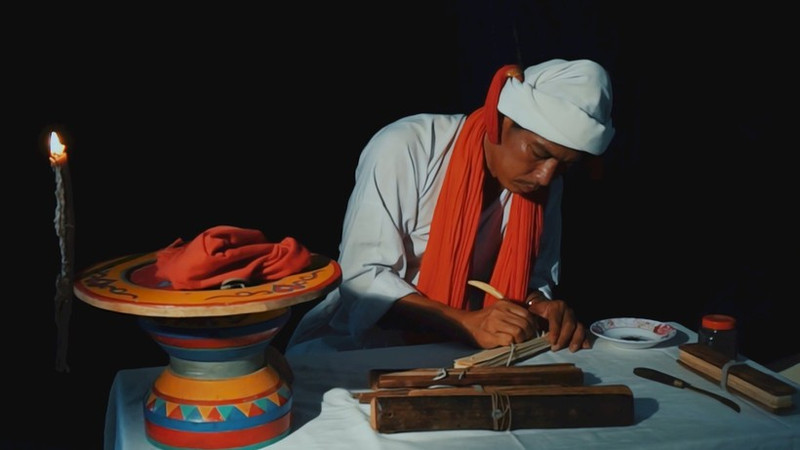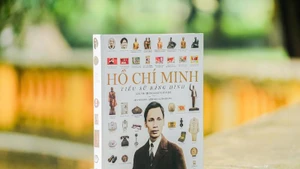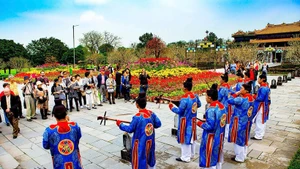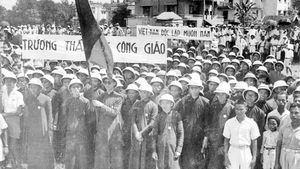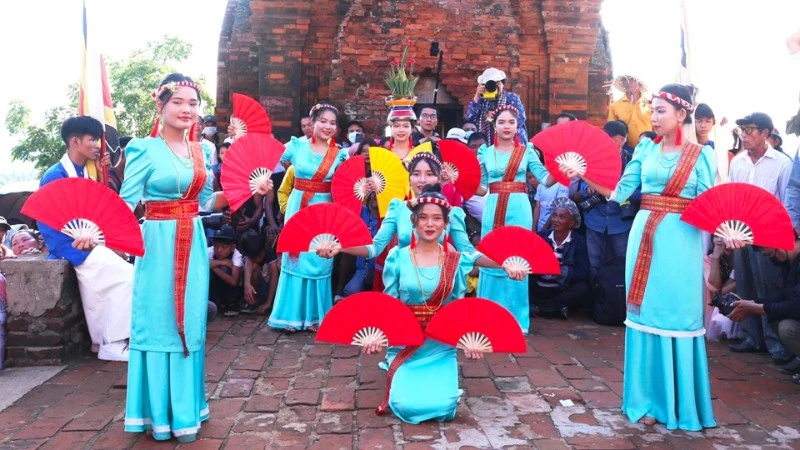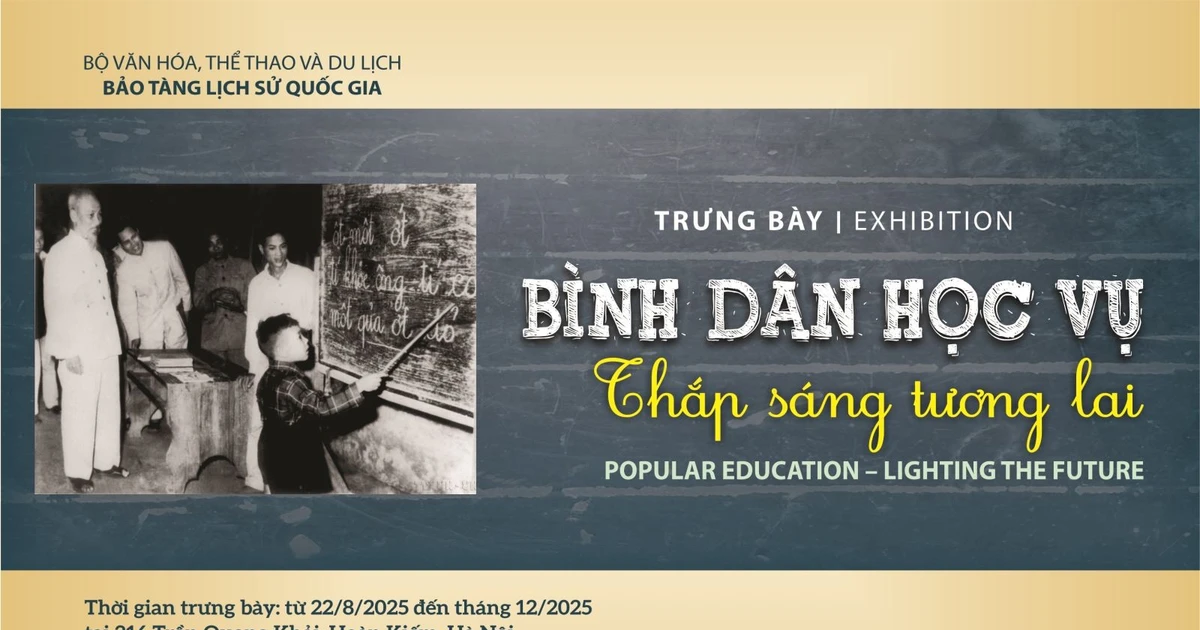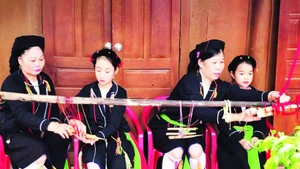Concerned by the gradual loss of these invaluable manuscripts, a Cham monk in Ninh Thuan has quietly undertaken the task of reviving this sacred tradition, driven by a deep reverence for his ancestral heritage.
Ninh Thuan, a sun-drenched and wind-swept province in central Viet Nam, endures a harsh climate. Since ancient times, the Cham people have turned to their deities for blessings of rain, harmony, and abundant harvests, channelling their prayers through religious dignitaries. The talipat-leaf manuscripts are essential tools that enable these spiritual leaders to access the metaphysical world for their community.
Artist revives each page of sacred book
If preserved properly, a single talipat-leaf manuscript can endure for centuries. These books are never used in daily life; they are sacred objects reserved for high-ranking clergy and are only brought forth during important ceremonies — be it for prayers, thanksgiving, processions, or communal festivals.
Unlike ordinary texts, talipat-leaf manuscripts contain not only scriptures but also knowledge of astronomy, calendrical systems, rituals, traditional medicine, religious beliefs, and cultural practices. Each page serves as a vessel of cultural memory, passed down with profound veneration. Yet, amid modern societal shifts, the techniques for crafting these books have largely faded. Many ancient manuscripts are now deteriorating due to the unforgiving climate and lack of proper preservation methods.
According to Cham cultural researchers, only a handful of original manuscripts remain intact. Most have suffered damage from termites, moisture, and age, compounded by a shortage of modern conservation techniques. These books are traditionally guarded by the Po Adhia (the highest-ranking person in the Cham “Paseh” priestly class, influenced by Brahmanism) who preside over Cham temple towers. Upon a priest’s passing, the manuscripts are passed on to his successor. Lower-ranking monks, despite their eagerness to learn and participate in rituals, often find it difficult to access these rare texts due to both scarcity and limited transmission.
Moreover, the ancient craftsmanship involved in producing these manuscripts is on the brink of extinction.
In this context, reviving the full production process — from selecting and treating leaves to inscribing, binding, and assembling — has become an urgent task in safeguarding this cultural treasure for future generations.
Acknowledging the critical value of the knowledge encoded in these books, a group of junior monks, supported by scholars, has begun to study and reconstruct the lost techniques. After years of diligent experimentation, they have successfully restored the art of leaf inscription.
Leading this effort is Po Tapasei (lower rank of Po Adhia) Nai Cao Liem from Vu Bon Hamlet, Phuoc Ninh Commune, Thuan Nam District, Ninh Thuan Province. Over the past decade, he has dedicated himself to independently studying, researching, and refining methods to recreate complete talipat-leaf manuscripts. Today, he preserves two ancient books and has meticulously crafted more than 40 new ones using traditional techniques. These are now actively used in local Cham religious ceremonies.
Liem and his fellow monks trek through forests and wade across streams to find leaves that are neither too young nor too old.
Once selected, the leaves are sun-dried for seven consecutive mornings between 7 and 9 a.m. This stage requires precise control of sunlight and constant turning to avoid curling or cracking. After drying, the leaves are cut and stacked in batches of 20 to 30, then pressed between wooden or bamboo covers for five to ten days. Holes are then punched for binding. Since the pages aren’t numbered, the thread binding not only holds them together but also ensures their sequence is preserved.
Unlike handwritten books, talipat-leaf manuscripts are engraved, not penned. The tool used is a small, pointed ceremonial knife typically wielded by clergy in religious rites. Liem discovered this detail after multiple failed attempts using pens and charcoal.
The creation of a talipat-leaf manuscript is the result of tireless and painstaking labour. The essence of each book lies in the engraving process, which demands flawless precision — just one mistake and the leaf must be discarded. Thus, the engraver must be patient, meticulous, and deeply familiar with the text’s content.
Each leaf can contain three to five lines of text on both sides. After engraving, Liem rubs powdered raw charcoal into the grooves to make the characters visible. This ink can last for centuries. “Raw charcoal symbolises purity. Burnt or processed charcoal is considered impure and never used in sacred rituals. This distinction is deeply respected by the Cham,” he explained.
Reviving heritage within community
Rather than keeping the knowledge to himself, Nai Cao Liem has begun teaching the craft to junior monks. The sacred Cham towers — traditional centres of worship — now double as communal workshops where he shares his techniques. These sessions are met with enthusiasm and hope; many young monks dream of one day owning a thick manuscript of their own. For some, these classes mark the first time they have held a talipat-leaf book they helped create. More than technical training, these sessions foster cultural understanding and reverence for the heritage encoded in each page.
Though made of simple materials — leaves and charcoal — talipat-leaf manuscripts embody a rich tradition of religious, cultural, and spiritual knowledge. They are also invaluable resources for researchers in history, linguistics, and ethnography. Every stage of the process, from leaf selection and treatment to engraving and preservation, constitutes a complex body of knowledge known fully only to those immersed in the practice.
This blend of raw beauty, simplicity, and sophistication is what makes the manuscripts compelling, not only to the Cham people but to anyone who values cultural heritage. Today, many scholars are collaborating with Brahmin communities to decipher the manuscripts’ contents, create digital databases, and explore digitisation as a means of safeguarding this treasured legacy for future generations.
The quiet dedication of Po Tapasei Nai Cao Liem stands as a powerful testament to the enduring vitality of Cham culture. With little more than a leaf, a small knife, and sincere devotion, he has reawakened a long-dormant tradition. These manuscripts are more than tools for spiritual practice, they are the vessels through which a people preserve their cultural soul.
